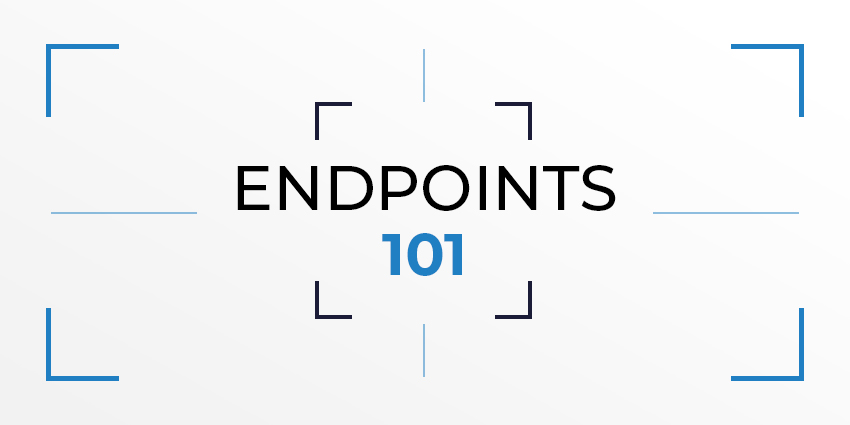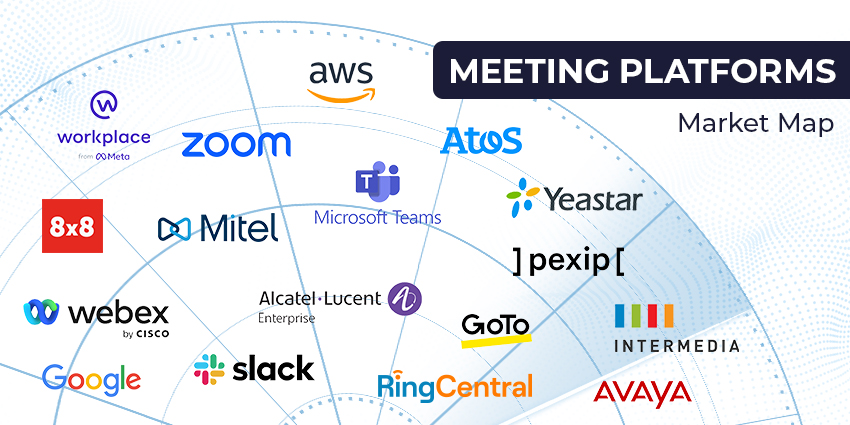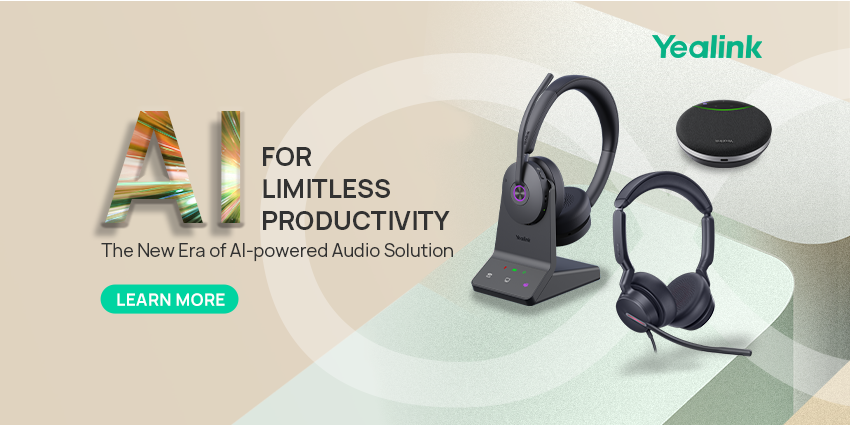In a world overwhelmed by software and cloud-based solutions, it’s easy to forget about the last component of the communication experience: the endpoints.
A fantastic CCaaS solution can help your teams to work from home when they can’t come into the office, but it won’t mean much if they don’t have the headsets and phones to deliver clear conversations with customers.
Leading collaboration tools can bring your team members face-to-face when they’re situated thousands of miles apart, but only if they have the webcams and microphones to allow for video conferencing. The endpoints of the communication landscape are an often overlooked and underappreciated part of the industry, but they’re an essential component, helping to hold your technology stack together.
In today’s landscape, where communication strategies are constantly evolving and improving, endpoints are becoming increasingly more advanced. Today, we don’t just have desk phones and computers to think about. Communication endpoints run the gamut from webcams to smart speakers, and mobile devices too.
What Are Communication Endpoints?
An endpoint in the communication industry is any device that a business can use to facilitate the use of a unified communication, collaboration, or contact centre service. Usually hardware tools, like phones, conference phones, and room systems, these solutions have become increasingly advanced over the years. Today, there are even communication companies that offer full packages for huddle rooms and meeting rooms, complete with everything you need for video, content sharing, and audio.
Communication endpoints still include the traditional desk phone. However, the phones that we use to communicate today are often a lot more advanced to the options that we used to rely on. For instance, research company MZA say that the desk phone is just as “in-demand” as ever. However, these tools are now more likely to come with extra features built-in.
For instance, you can get desk phones with dedicated buttons that link your calls directly to your favourite collaboration tools, like Zoom or Microsoft Teams. There are desk phones with video conferencing technology built-in and multi-media phones that can share content in seconds. You can even get desk phones with their own smart assistants built-in, which can take notes, transcribe calls, or set up calendar meetings for the employee using them.
Some common examples of endpoints in the current landscape include:
- Headsets: Ideal for remote and mobile workers
- Desk phones: Often with advanced functionality or multimedia support
- Conference phones: For meetings with multiple people
- Room kits: Packages that include everything needed for a meeting
- Video cameras: With everything from intelligent computer vision to wide-camera angles
- Smart speakers: Like Amazon Alexa or Google Home, which deliver support to office employees
Communication Endpoint Trends
Clearly, communication endpoints still form an essential part of the conversational stack that we use today. Without them, video talks, calls, and other forms of connectivity would be impossible. However, the endpoints that we use today are far more evolved than the ones that we relied on a couple of decades ago. We’re seeing new trends changing the scope of the endpoint environment all of the time, such as:
- Virtual and augmented reality: Intelligent camera tools and advanced technology are opening the door for new types of mixed reality. In the meeting rooms and offices of the future, our endpoints could allow us to cast holograms of ourselves into physical spaces or feel as though we’re sitting in the office when we’re working from home
- Smart speakers and assistants: Smart speakers with voice-activated assistants are one of the biggest trends in the endpoint environment now. These tools allow us to strengthen the connection between human employees and artificial intelligence. With smart speakers, team members can schedule calls, launch meetings, and share data in seconds, all just by using their voice. Smart assistants can also automatically transcribe notes in a meeting or translate voices in a conversation
- Video: As the demand for remote and distributed work continues to grow, our reliance on video endpoints has grown with it. Many companies are now embracing the video-first company culture, which means that more meetings are conducted from a distance, yet still face-to-face. Video endpoints can include everything from huddle room cameras with a wide-angle field of view, to a standard webcam
- Enhanced end-user experience: Endpoints are now evolving to give business users the same convenience and simplicity that they would expect from their devices at home, in the office. With one-touch buttons for launching meetings from a conference phone to touchscreens that make it easier to interact with content-sharing tools, endpoints are becoming more intuitive
- Agnostic performance: To deliver some of the simplicity that businesses are looking for today, some endpoints are also delivering more flexibility to users too. Rather than having to buy an endpoint from the same people you buy your software from, you can build the perfect stack with best-of-class tools from different companies
Communication Endpoint Vendors
There are tons of endpoint vendors on the market today, including companies that focus exclusively on business tools like desk phones and conference phones. However, there’s also more freedom for endpoints from other companies to appear in the office too. For instance, tools like Amazon Alexa and Google Home speakers can easily make the workplace more efficient, even though they weren’t originally designed for the enterprise.
When shopping for Endpoint vendors, today’s companies need to think carefully about what they want to accomplish with their communication stack. For instance, choosing an endpoint that’s software agnostic means that you can allow your employees to use any software that they choose for communication and collaboration purposes.
On the other hand, if you already have certain pieces of software in place, then choosing endpoints that are designed to work seamlessly with that software could boost performance. For instance, phones and headsets with dedicated Microsoft Teams buttons make collaborating easier and more natural than ever.
Check out some of our favourite vendors in the communication endpoint space by looking at our endpoint market guide for a complete directory of some of the top-performing companies. Or, if you’re looking for a behind-the-scenes evaluation of the most innovative companies on the market right now, check out our recent winner of the UC Awards for Endpoints!
Communication Endpoint Events
Events in the communication, collaboration, and customer experience landscape are one of the best ways to stay ahead of the trends and make sure that you’re on the cutting edge of your industry. Events in the A/V space, as well as UCaaS, CCaaS, and collaboration, can all introduce new types of communication devices to explore.
By visiting some of the most reputable UC events in the industry, the team at UC Today can bring you insights into the tools that are enabling digital transformation for people all over the world. For instance, we can give you a Birdseye view of what the future office space might look like, with plug-and-play huddle room kits that allow people to jump into a meeting at a moment’s notice.
We can also use events as a chance to explore some of the solutions that vendors are introducing to common communication problems. For instance, leaders in the headset environment are constantly introducing new and improved ways to help employees stay productive in any landscape. With access to things like noise cancellation technology, your teams can stay focused, while delivering a better quality of conversation to your target audience.
Events are a chance to see the transformative technology in the endpoint environment in use. This includes everything from smart cameras that can recognise a person and launch a meeting for them as soon as they walk into a room. It could also include new intelligent tools that are designed specifically for the business landscape, like holographic meeting rooms, AR and VR in the business environment, and new tools for more engaging collaboration.
Check out some of the most exciting reports from the endpoint events we’ve visited today.
Communication Endpoint Reviews
As new tools continue to emerge in the communication marketplace, claiming to make conversations more intuitive and efficient, it can be difficult to know which endpoints you actually need for your team. After all, not everyone is going to need a VR meeting room or a smart speaker assistant just because it’s available.
Our communication endpoint reviews at UC Today will give you a closer look at some of the top features and benefits of the leading endpoints on the market. More importantly, they’ll give you a chance to determine for yourself whether these new solutions are right for your team. While your purchasing decision will be based on a lot of factors unique to you, we recommend thinking about:
- Integration and accessibility: Endpoints that are software agnostic give you more freedom to use the digital tools that you want with the endpoints that can deliver the best results. You can also look into the hardware and software partnerships that are happening frequently in the communication environment today, for an insight into the tools and software that work best together. Certified tools that work efficiently with your existing software solutions could significantly improve employee productivity
- Ease of use: Endpoints in the communication landscape are only effective if your employees want to use them. Increasingly, today’s team members are looking for endpoints that can deliver the same convenience and simplicity that they get from their own devices at home. Make sure that the endpoints you choose are not just intuitive and forward-thinking, but also easy enough for your employees to access when they need to
- Flexibility: How easy will it be to deploy and provision new hardware when your teams need it? Can you provision devices from a distance when you’re sending crucial endpoints to your team members that work remotely? Zero-touch deployment methods are becoming increasingly popular as 50% of the UK prepares to enter the world of remote work
Communication Endpoint Comparisons
You may find that your choice of a crucial endpoint solution eventually comes down to two options. It’s important in this case to make sure that you’re comparing your solutions like-for-like. There’s a big difference between a multi-media room kit that offers video conferencing, and a video conferencing camera, for instance.
Here at UC Today, we conduct regular comparisons of some of the leading products in the endpoints environment, to help our readers make the best possible decisions. However, we also have some tips that could help you make the most of your own comparisons too. For instance:
- Address the problem first: Think about the problem that this endpoint is going to solve. Are you trying to improve remote worker engagement with video cameras for conferencing? If so, then you’ll need the cameras to be easy-to-use, secure, and also simple enough to provision from a distance
- Consider your users: Remember that your employees will have different preferences when it comes to endpoints. Some people will prefer to use headsets for taking calls and managing conversations with customers, while others will want to stick with a standard phone or conferencing device. Speak to your employees about what they want to use before you start investing in bulk endpoints
- Security and compliance: Security isn’t just a concern to think about when you’re choosing cloud services and software. You also need to ensure that your endpoints are built from the ground up with security in mind. This could mean having access to provisioning and monitoring systems on the cloud that allow you to track all of your devices at once. It could also mean ensuring that the right firmware and software is in place to protect conversations on connected devices
UC Today Communication Endpoints Smart Guide
In a world where communication strategies are continually changing, it’s easy to overlook the importance of the endpoint in your tech stack. However, remember that without the right cameras, headsets, speakers, and other crucial tools, your comms strategy would be limited to nothing but face-to-face conversations.
If you need extra help making the most out of your endpoints, check out our endpoints and accessories UC Today Smart guide. This guide will tell you everything you need to know about desk phones, headsets, conference phones, video conferencing products, and more.
Don’t underestimate the power of the endpoint.







